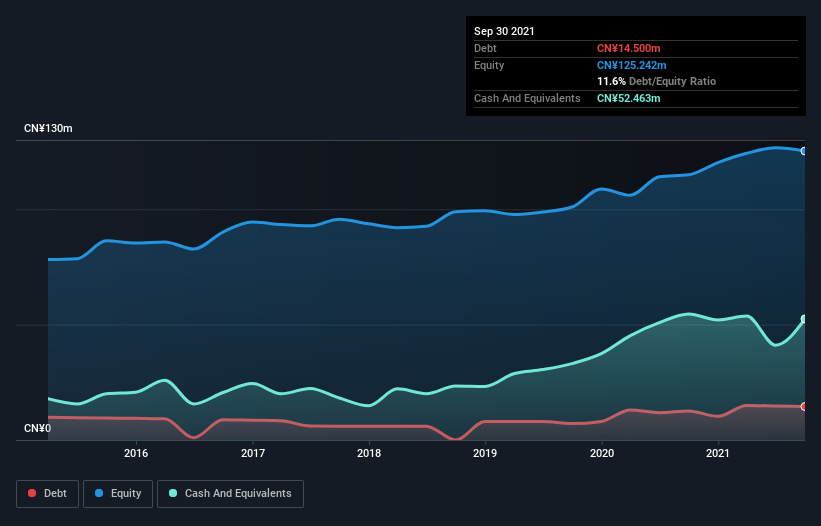Pearl River Holdings (CVE:PRH) Has A Rock Solid Balance Sheet
David Iben put it well when he said, 'Volatility is not a risk we care about. What we care about is avoiding the permanent loss of capital.' So it might be obvious that you need to consider debt, when you think about how risky any given stock is, because too much debt can sink a company. As with many other companies Pearl River Holdings Limited (CVE:PRH) makes use of debt. But the more important question is: how much risk is that debt creating?
When Is Debt A Problem?
Debt and other liabilities become risky for a business when it cannot easily fulfill those obligations, either with free cash flow or by raising capital at an attractive price. If things get really bad, the lenders can take control of the business. While that is not too common, we often do see indebted companies permanently diluting shareholders because lenders force them to raise capital at a distressed price. Having said that, the most common situation is where a company manages its debt reasonably well - and to its own advantage. When we think about a company's use of debt, we first look at cash and debt together.
View our latest analysis for Pearl River Holdings
How Much Debt Does Pearl River Holdings Carry?
As you can see below, at the end of September 2021, Pearl River Holdings had CN¥14.5m of debt, up from CN¥12.6m a year ago. Click the image for more detail. But on the other hand it also has CN¥52.5m in cash, leading to a CN¥38.0m net cash position.

How Healthy Is Pearl River Holdings' Balance Sheet?
Zooming in on the latest balance sheet data, we can see that Pearl River Holdings had liabilities of CN¥57.0m due within 12 months and liabilities of CN¥18.5m due beyond that. Offsetting these obligations, it had cash of CN¥52.5m as well as receivables valued at CN¥54.9m due within 12 months. So it actually has CN¥31.8m more liquid assets than total liabilities.
This luscious liquidity implies that Pearl River Holdings' balance sheet is sturdy like a giant sequoia tree. Having regard to this fact, we think its balance sheet is as strong as an ox. Simply put, the fact that Pearl River Holdings has more cash than debt is arguably a good indication that it can manage its debt safely.
Another good sign is that Pearl River Holdings has been able to increase its EBIT by 23% in twelve months, making it easier to pay down debt. The balance sheet is clearly the area to focus on when you are analysing debt. But you can't view debt in total isolation; since Pearl River Holdings will need earnings to service that debt. So if you're keen to discover more about its earnings, it might be worth checking out this graph of its long term earnings trend.
Finally, a business needs free cash flow to pay off debt; accounting profits just don't cut it. While Pearl River Holdings has net cash on its balance sheet, it's still worth taking a look at its ability to convert earnings before interest and tax (EBIT) to free cash flow, to help us understand how quickly it is building (or eroding) that cash balance. During the last three years, Pearl River Holdings generated free cash flow amounting to a very robust 99% of its EBIT, more than we'd expect. That puts it in a very strong position to pay down debt.
Summing up
While we empathize with investors who find debt concerning, you should keep in mind that Pearl River Holdings has net cash of CN¥38.0m, as well as more liquid assets than liabilities. And it impressed us with free cash flow of CN¥8.3m, being 99% of its EBIT. At the end of the day we're not concerned about Pearl River Holdings's debt. There's no doubt that we learn most about debt from the balance sheet. But ultimately, every company can contain risks that exist outside of the balance sheet. For example, we've discovered 1 warning sign for Pearl River Holdings that you should be aware of before investing here.
If you're interested in investing in businesses that can grow profits without the burden of debt, then check out this free list of growing businesses that have net cash on the balance sheet.
New: Manage All Your Stock Portfolios in One Place
We've created the ultimate portfolio companion for stock investors, and it's free.
• Connect an unlimited number of Portfolios and see your total in one currency
• Be alerted to new Warning Signs or Risks via email or mobile
• Track the Fair Value of your stocks
Have feedback on this article? Concerned about the content? Get in touch with us directly. Alternatively, email editorial-team (at) simplywallst.com.
This article by Simply Wall St is general in nature. We provide commentary based on historical data and analyst forecasts only using an unbiased methodology and our articles are not intended to be financial advice. It does not constitute a recommendation to buy or sell any stock, and does not take account of your objectives, or your financial situation. We aim to bring you long-term focused analysis driven by fundamental data. Note that our analysis may not factor in the latest price-sensitive company announcements or qualitative material. Simply Wall St has no position in any stocks mentioned.
About TSXV:PRH
Pearl River Holdings
Through its subsidiaries, engages in the manufacture and distribution of plastic products in the People’s Republic of China, Australia, the United States, and internationally.
Moderate with mediocre balance sheet.
Market Insights
Community Narratives



